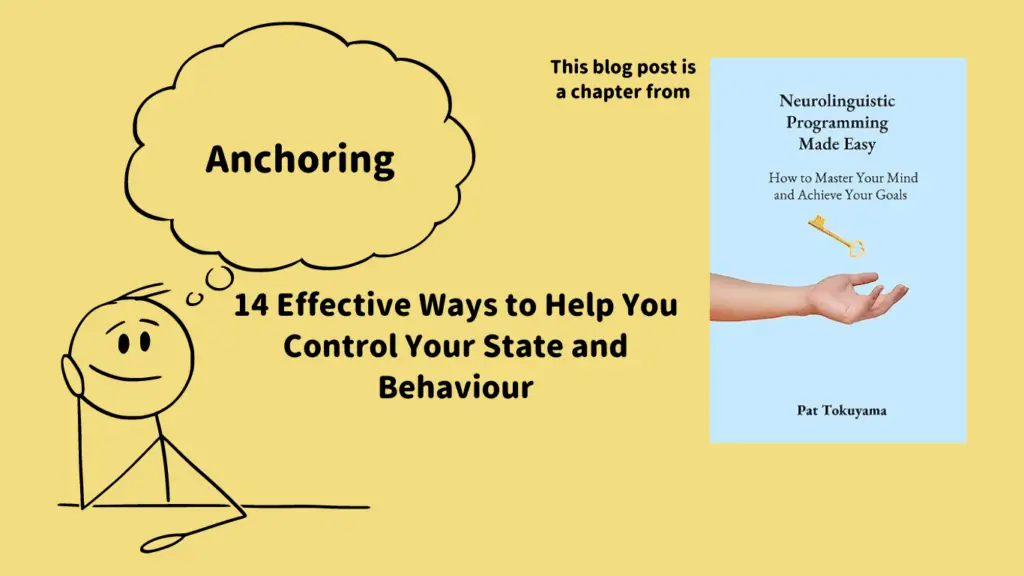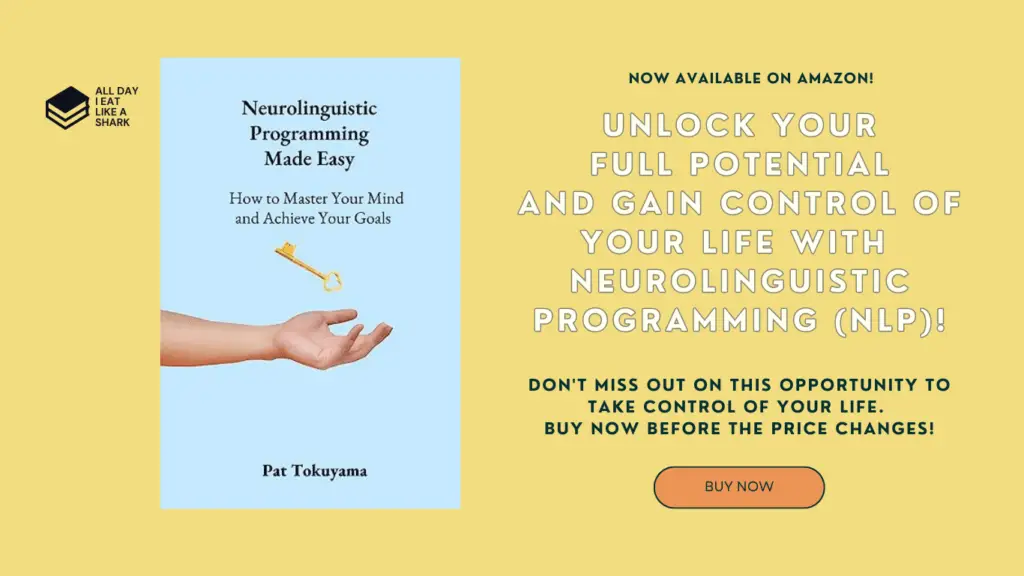
This is the fifth chapter of the Neurolinguistic Programming Made Easy: How to Master Your Mind and Achieve Your Goals by Pat Tokuyama
Guide to the Good Stuff
Have you ever noticed that some stimuli can trigger a specific state or response in you or others? To illustrate, a song can make you feel happy or sad. A smell can make you feel hungry or nauseous. A word can make you feel angry or calm.
These are examples of anchors, associating an external or internal stimulus with a specific state or response.
What is anchoring
Anchors are the way you link things in your mind through your senses: visual (seeing), auditory (hearing), kinesthetic (feeling), olfactory (smelling), or gustatory (tasting).
Anchors affect how you perceive the world, how you learn, how you remember, and how you relate to others. Knowing your own anchors and how to change them can help you control your state and behavior.
How to set anchors
One way to set anchors is to intentionally associate a stimulus with a state or response you want to trigger.
For example, suppose you want to trigger a state of confidence. In that case, you can associate a stimulus like a word, a gesture, or an image with a state of confidence. You can do this by following these steps:
1. Choose a stimulus that you want to use as an anchor
It can be anything you can see, hear, feel, smell, or taste. Make sure it is unique and easy to reproduce.
2. Choose a state or response that you want to anchor
It can be anything that you want to feel or do. Make sure it is positive and useful.
3. Recall or imagine when you experienced the state or response you want to anchor
Make it as vivid and realistic as possible. Use all your senses and submodalities to enhance the experience.
4. Apply the stimulus you chose as an anchor
Do this when you feel the state or response at its peak.
For example, if you chose a word as an anchor, say it aloud or in your mind. If you chose a gesture as an anchor, do it with your body. If you chose an image as an anchor, look at it or visualize it.
5. Repeat the process
Repeat the process several times until the stimulus and the state or response are firmly linked in your mind.
6. Set anchors
Setting anchors allows you to create triggers that help you access positive resources, change unwanted habits, and control your emotions.
How to test anchors
Another way to set anchors is to identify associations between stimuli and states or responses occurring naturally or unconsciously.
For example, if you notice that a particular song makes you feel happy or sad, you can test if it is an anchor for that state or response. You can do this by following these steps:
1. Choose a stimulus you suspect is an anchor for a state or response.
It can be anything you can see, hear, feel, smell, or taste. Make sure it is something that occurs frequently or randomly in your life.
2. Choose a state or response that you suspect is anchored by the stimulus
It can be anything you feel or do when exposed to the stimulus. Make sure it is something that affects your performance or well-being.
3. Apply the stimulus
Apply the stimulus and notice if it triggers the state or response that you suspect is anchored by it.
For example, if you suspect a song is an anchor for happiness or sadness, play it and notice if it makes you happy or sad.
4. Repeat the process
Repeat the process several times until you confirm or disconfirm the existence of the anchor.
You can discover triggers that affect your state and behavior by testing anchors.
How to change anchors
One of the most useful applications of NLP is changing anchors. Changing anchors means modifying, replacing, or removing existing associations between stimuli and states or responses. Changing anchors can help you change the way you feel and act.
To change anchors, you need to use your imagination and creativity. You need to experiment with different stimuli and states or responses and notice how they affect your outcome. You need to use the following techniques:
1. Stacking
A technique that helps you strengthen an existing anchor by adding more stimuli, states, or responses.
For example, suppose you want to enhance an anchor for confidence. In that case, you can stack more stimuli or states or responses that are related to confidence on top of it.
2. Collapsing
A technique that helps weaken an existing anchor by associating it with an opposite or incompatible state or response.
For example, if you want to reduce an anchor for fear, you can collapse it with an anchor for courage or calmnes.
3. Changing
A technique that helps you modify an existing anchor by changing its submodalities.
For example, if you want to change an anchor for anger, you can change its submodalities to make it less intense and more distant.
4. Replacing
A technique that helps you replace an existing anchor with a different one, leading to a more desirable state or response. For example, suppose you want to replace an anchor for procrastination with an anchor for motivation. In that case, you can replace the stimulus or the state or response associated with procrastination with the stimulus or the state or response associated with motivation. Changing anchors can change how you feel and act about anything in your life.
Summary
In this chapter, you learned about anchoring, the association of an external or internal stimulus with a specific state or response. You learned how to set anchors by associating a stimulus with a state or response you want to trigger. You also learned how to test anchors by identifying associations between stimuli and states or responses occurring naturally or unconsciously. You also learned how to change anchors by modifying, replacing, or removing existing associations between stimuli and states or responses.
In the next chapter, you’ll learn about higher-level NLP applications that combine the concepts and techniques you have learned.
